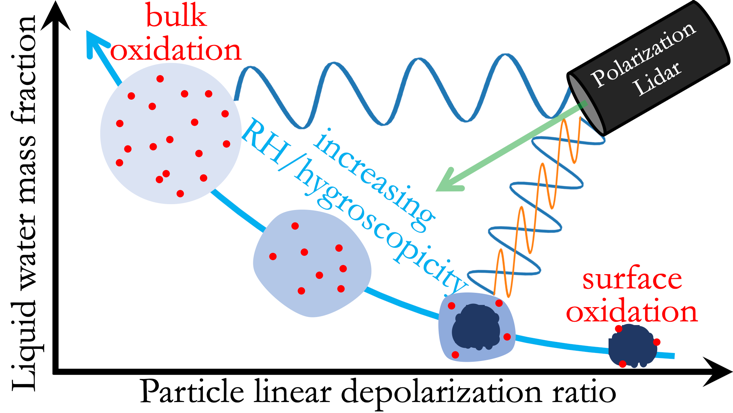Wangshu Tan1, Yingli Yu1, Chengcai Li*, 1, Jing Li1, Ling Kang2, Huabin Dong2, Limin Zeng2, Tong Zhu2, 3
1Department of Atmospheric and Oceanic Sciences, School of Physics, Peking University, Beijing 100871, China
2State Key Joint Laboratory of Environmental Simulation and Pollution Control, College of Environmental Science & Engineering, Peking University, Beijing 100871, China
3Beijing Innovation Center for Engineer Science and Advanced Technology, Peking University, Beijing 100871, China
*Corresponding author: Chengcai Li (ccli@pku.edu.cn)
Abstract
Aerosol liquid water content (ALWC) plays fundamental roles in atmospheric radiation and chemical processes. However, there is little information about ALWC vertical distribution due to the lack of sufficient measurement. In this study, a novel method to retrieve ALWC using a polarization lidar is proposed. By analyzing lidar measurement combined with in situ chemical composition measurements at the surface, the particle linear depolarization ratio δp is found to be well correlated with the liquid water mass fraction. The method is built upon a valid relationship between δp and the ratio of ALWC to the particle backscatter coefficient. ALWC can be retrieved with a relative error of 30% with this method. A case study shows that the ALWC in upper levels of the boundary layer may be different from that at the ground, suggesting the importance of measuring ALWC vertical profiles during haze episodes. The study proves that polarization lidars have the potential to retrieve vertical distributions of ALWC which will benefit studies on haze formation.

Full Paper: https://pubs.acs.org/doi/10.1021/acs.est.9b07502
Citation: Tan, W.; Yu, Y; Li, C.*; Kang, L.; Dong, H.; Zeng, L.; Zhu, T., Profiling aerosol liquid water content using a polarization lidar. Environ. Sci. Technol. 2020, 10.1021/acs.est.9b07502. (IF 2018=7.149)
